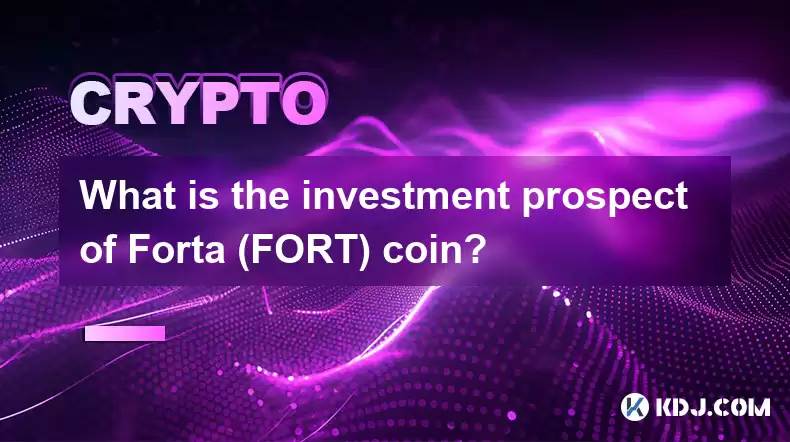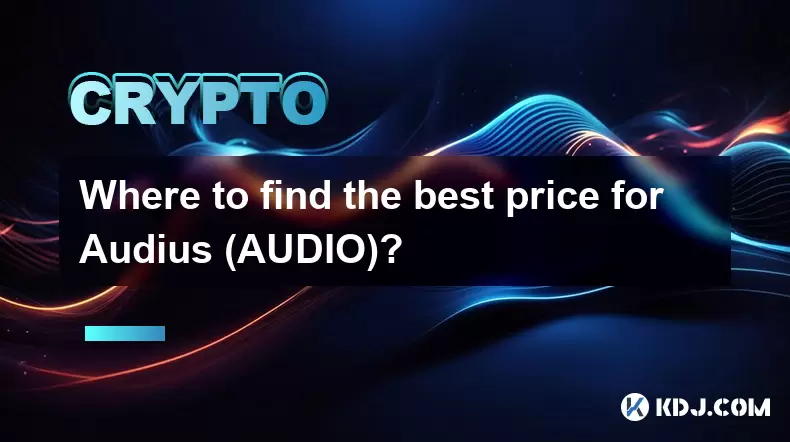-
 Bitcoin
Bitcoin $119100
-0.58% -
 Ethereum
Ethereum $4278
-0.66% -
 XRP
XRP $3.164
-1.81% -
 Tether USDt
Tether USDt $1.000
0.01% -
 BNB
BNB $811.7
0.11% -
 Solana
Solana $176.3
-3.92% -
 USDC
USDC $0.9999
0.01% -
 Dogecoin
Dogecoin $0.2255
-4.43% -
 TRON
TRON $0.3480
2.60% -
 Cardano
Cardano $0.7828
-3.40% -
 Hyperliquid
Hyperliquid $43.59
-4.94% -
 Chainlink
Chainlink $21.34
-3.88% -
 Stellar
Stellar $0.4443
-0.97% -
 Sui
Sui $3.697
-5.60% -
 Bitcoin Cash
Bitcoin Cash $596.5
4.16% -
 Hedera
Hedera $0.2498
-5.10% -
 Ethena USDe
Ethena USDe $1.001
-0.03% -
 Avalanche
Avalanche $23.11
-4.00% -
 Litecoin
Litecoin $121.1
-1.75% -
 Toncoin
Toncoin $3.397
0.42% -
 UNUS SED LEO
UNUS SED LEO $9.002
-1.29% -
 Shiba Inu
Shiba Inu $0.00001307
-4.57% -
 Uniswap
Uniswap $11.20
0.30% -
 Polkadot
Polkadot $3.901
-4.75% -
 Cronos
Cronos $0.1698
3.07% -
 Ethena
Ethena $0.8122
-3.72% -
 Dai
Dai $1.000
0.03% -
 Bitget Token
Bitget Token $4.416
-1.13% -
 Monero
Monero $263.9
-0.82% -
 Pepe
Pepe $0.00001130
-7.37%
What is the investment prospect of Forta (FORT) coin?
By creating custom detectors and providing real-time alerts, Forta Network empowers developers to strengthen blockchain security.
Jan 01, 2025 at 06:19 am

Key Points:
- Forta Network Overview
- Functionality and Benefits of Forta
- FORT Tokenomics and Distribution
- Current Market Performance of FORT
- Potential Adoption and Growth Factors
- Investment Considerations and Risks
- Future Development of Forta Network
Forta Network Overview
Forta Network is a decentralized security monitoring platform for blockchain networks. It enables developers to create custom security detectors, called "watchers," that monitor blockchain transactions and events for suspicious or malicious activity. If a watcher detects suspicious activity, it sends an alert to users and triggers a response.
Functionality and Benefits of Forta
Forta offers several key features and benefits:
- Decentralized security monitoring: Forta's decentralized network allows anyone to contribute to the detection of security threats on blockchain networks. This creates a more resilient and comprehensive security ecosystem.
- Customizable detectors: Developers can create and share their own watchers to monitor specific security risks. This allows users to tailor security monitoring to their specific needs.
- Real-time alerts: Forta's watchers provide real-time alerts for suspicious activity, enabling users to respond quickly and mitigate potential risks.
- Integration with other tools: Forta can be integrated with other blockchain tools and services, such as wallets, transaction monitors, and analytics platforms.
FORT Tokenomics and Distribution
FORT is the native token of the Forta Network. It serves several purposes, including:
- Network rewards: FORT tokens are distributed to node operators and watchers who contribute to the network's security.
- Governance: FORT holders have governance rights and can participate in the decision-making process for the Forta Network.
- Staking: Users can stake FORT tokens to earn additional rewards and support the network's security.
Current Market Performance of FORT
FORT has been listed on several cryptocurrency exchanges, including Binance, Coinbase, and Uniswap. The token has experienced significant price volatility since its launch in August 2021. As of February 2023, the price of FORT is approximately $40.
Potential Adoption and Growth Factors
The adoption and growth of Forta Network depend on several factors:
- Increasing demand for blockchain security: The growing use of blockchain networks for various applications has created a need for robust security solutions.
- Ease of use and customization: Forta's user-friendly platform and customizable detectors make it accessible to a wider range of users.
- Partnerships and integrations: Forta's partnerships with other blockchain projects and service providers can expand its reach and enhance its value proposition.
Investment Considerations and Risks
Before investing in FORT, consider the following factors:
- Market volatility: The cryptocurrency market is highly volatile, which can affect the price of FORT.
- Competition: Forta faces competition from other blockchain security projects, such as Chainlink Guard and Certik.
- Token utility: The value of FORT depends on its utility within the Forta Network and its adoption by blockchain projects.
Future Development of Forta Network
Forta's team is continuously working on developing new features and enhancements for the network. Some planned developments include:
- Expanded watcher library: The addition of more watchers to the Forta ecosystem to cover a broader range of security risks.
- Enhanced customization: Providing more options for users to tailor their security monitoring to specific applications and assets.
- Integration with decentralized finance (DeFi) platforms: Enabling Forta to monitor security risks within the growing DeFi ecosystem.
FAQs
Q: What is the difference between Forta and Chainlink Guard?
A: Both Forta and Chainlink Guard are blockchain security platforms, but they have different approaches. Forta focuses on decentralized monitoring, allowing anyone to contribute watchers to the network. Chainlink Guard, on the other hand, uses a centralized approach and focuses on providing a comprehensive solution for smart contract security.
Q: How do I create a watcher on the Forta Network?
A: You can create a watcher on the Forta Network by writing a custom Solidity smart contract that implements the Forta watcher interface. The smart contract should define the specific security threats or suspicious patterns it detects.
Q: How do I earn FORT tokens?
A: You can earn FORT tokens by running a node on the Forta Network, contributing watchers to the network, and participating in governance. The amount of FORT you earn depends on the amount of time and resources you contribute to the network.
Q: What are the future plans for Forta Network?
A: Forta Network plans to expand its watcher library, enhance customization, and integrate with DeFi platforms. The team is also exploring ways to make the network more accessible to a wider range of users and blockchain projects.
Disclaimer:info@kdj.com
The information provided is not trading advice. kdj.com does not assume any responsibility for any investments made based on the information provided in this article. Cryptocurrencies are highly volatile and it is highly recommended that you invest with caution after thorough research!
If you believe that the content used on this website infringes your copyright, please contact us immediately (info@kdj.com) and we will delete it promptly.
- BlockDAG, Chainlink, Hedera: The Cryptos Enterprises are Eyeing
- 2025-08-12 09:30:12
- Dogecoin's Wild Ride: Big Holders, Price Push, and What's Next for the Meme Coin
- 2025-08-12 08:30:12
- Coin Master Board Adventure: Free Energy and the Thrill of the Board
- 2025-08-12 08:50:12
- Bitcoin to $133,000? Here's What the Experts Are Saying
- 2025-08-12 08:30:12
- LYNO AI Presale: Early Bird Opportunity Before Token Price Hike
- 2025-08-12 08:50:12
- Dogecoin, Tron Update, Cold Wallet ROI: Navigating Crypto's Choppy Waters
- 2025-08-12 09:30:12
Related knowledge

How to purchase Aragon (ANT)?
Aug 09,2025 at 11:56pm
Understanding Aragon (ANT) and Its PurposeAragon (ANT) is a decentralized governance token that powers the Aragon Network, a platform built on the Eth...

Where to trade Band Protocol (BAND)?
Aug 10,2025 at 11:36pm
Understanding the Role of Private Keys in Cryptocurrency WalletsIn the world of cryptocurrency, a private key is one of the most critical components o...

What is the most secure way to buy Ocean Protocol (OCEAN)?
Aug 10,2025 at 01:01pm
Understanding Ocean Protocol (OCEAN) and Its EcosystemOcean Protocol (OCEAN) is a decentralized data exchange platform built on blockchain technology,...

Where can I buy UMA (UMA)?
Aug 07,2025 at 06:42pm
Understanding UMA and Its Role in Decentralized FinanceUMA (Universal Market Access) is an Ethereum-based decentralized finance (DeFi) protocol design...

How to buy Storj (STORJ) tokens?
Aug 09,2025 at 07:28am
Understanding Storj (STORJ) and Its Role in Decentralized StorageStorj is a decentralized cloud storage platform that leverages blockchain technology ...

Where to find the best price for Audius (AUDIO)?
Aug 11,2025 at 04:01pm
Understanding the Basics of Ethereum StakingEthereum staking refers to the process of locking up ETH tokens to support the security and operations of ...

How to purchase Aragon (ANT)?
Aug 09,2025 at 11:56pm
Understanding Aragon (ANT) and Its PurposeAragon (ANT) is a decentralized governance token that powers the Aragon Network, a platform built on the Eth...

Where to trade Band Protocol (BAND)?
Aug 10,2025 at 11:36pm
Understanding the Role of Private Keys in Cryptocurrency WalletsIn the world of cryptocurrency, a private key is one of the most critical components o...

What is the most secure way to buy Ocean Protocol (OCEAN)?
Aug 10,2025 at 01:01pm
Understanding Ocean Protocol (OCEAN) and Its EcosystemOcean Protocol (OCEAN) is a decentralized data exchange platform built on blockchain technology,...

Where can I buy UMA (UMA)?
Aug 07,2025 at 06:42pm
Understanding UMA and Its Role in Decentralized FinanceUMA (Universal Market Access) is an Ethereum-based decentralized finance (DeFi) protocol design...

How to buy Storj (STORJ) tokens?
Aug 09,2025 at 07:28am
Understanding Storj (STORJ) and Its Role in Decentralized StorageStorj is a decentralized cloud storage platform that leverages blockchain technology ...

Where to find the best price for Audius (AUDIO)?
Aug 11,2025 at 04:01pm
Understanding the Basics of Ethereum StakingEthereum staking refers to the process of locking up ETH tokens to support the security and operations of ...
See all articles

























































































